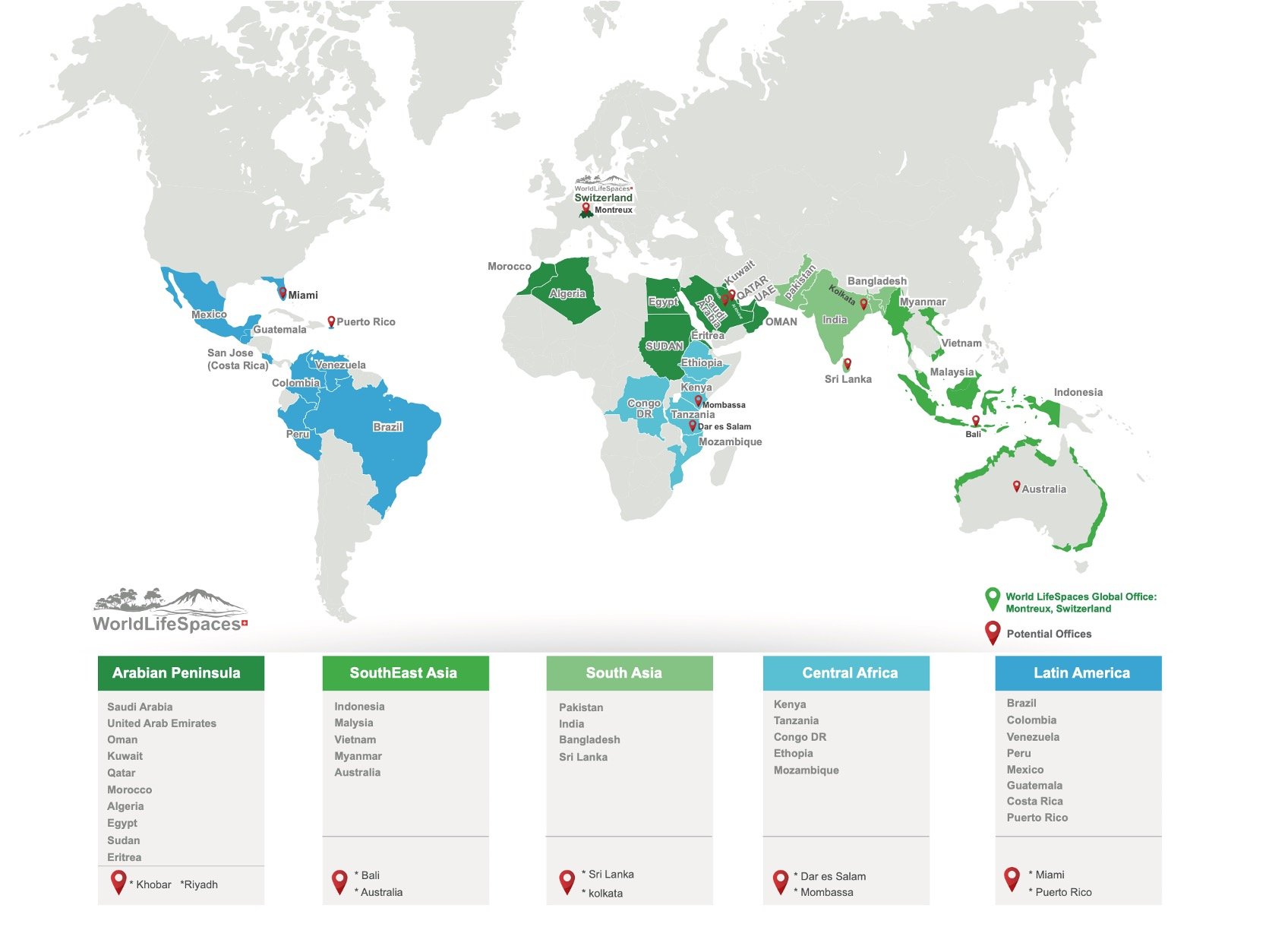global network of regional excellence hubs
To fulfill its ambition to mobilize support and realize the conservation and restoration of critical biospheres around the world, World LifeSpaces will establish, build, and expand operational capacity in five geographical areas, through the development of Regional Excellence Hubs. See Global Map below.
In each area, a dedicated office will drive and oversee the execution of large-scale, long-term forest conservation and restoration programs and projects, in close collaboration with local partners, communities and authorities.
Science-based Key Performance Indicators guiding the strategic plans and management of the forestation programs include the total surface of protected biospheres, diversity, contribution to the carbon removal from the atmosphere, quality of community engagement, and the total population positively affected.
Initially, an existing operational capacity for forestation programs will be expanded in Saudi Arabia and knowledge gained from this program will be leveraged to develop and implement operational capacity in the additional Global Excellence Hubs.
Global network of execution offices
1.1 Southeast Asia
This region is within the tropics and has large populations and considerable mangrove and terrestrial forests, which are ideal for carbon sequestration and carbon sinks. Considering an office in Singapore or in Bali, Indonesia or for conservative operations perhaps in Australia.
1.2 Central & South America
This region straddles the equator and has large tropical mangroves and terrestrial forests ideal for carbon sequestration and storage. Also has large population densities and recommend an office in American territory of Puerto Rico or in the Caribbean islands or in Florida as a conservative approach.
1.3 Central Africa
This region also straddles the equator, and has large areas of terrestrial tropical forest, and some areas on both the Atlantic and Indian Ocean coastline of mangrove ecosystems, both of which are ideal for carbon sequestration and storage. Also has high population densities and suggest the establishment of an office in East Africa, either in Tanzania, or in Kenya for stability.
1.4 Arabian Peninsula
Horn of Africa and Middle East and North Africa (MENA) – this region dips into the tropics below the Tropic of Cancer in Arabia, primarily Saudi Arabia and Egypt, Sudan, Eritrea, Ethiopia, and Djibouti. The northern areas of this region, although they are outside of the tropics, contain Mediterranean climates along the coast of north Africa and altitude both in Ethiopia and the Atlas Mountains in Morocco. The region has major river systems such as the Nile river and its Delta in Egypt and Sudan. In addition, there are elevated areas with wadi discharges to the coast along the south west coast line of Saudi Arabia. The region has potential because it fits the requirements of the Saudi green initiative and Middle East Green initiative sponsored from Saudi Arabia. Office in eastern province of Saudi Arabia.
1.5 South Asia
This region includes Pakistan, India, Sri Lanka, and Bangladesh and has potential because of its tropical and moist climates and major river systems that support development of mangroves and terrestrial forests for carbon extraction and storage. The region also has a high density of populations. In the case of Pakistan, it also meets with the Saudi Green Initiative and Middle East Green Initiative mandate, suggest an office in Sri Lanka.


